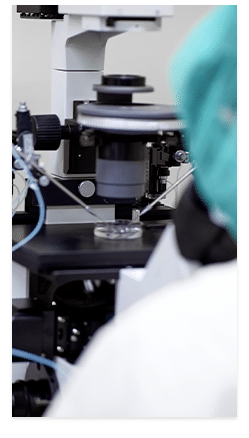Your frozen embryo is the start of your future family.
A Frozen Embryo Transfer (FET) is actually exactly what it sounds like: the transfer of a previously frozen (also known as “cryopreserved”) embryo that is thawed and placed into the uterus. FET is a step within the larger IVF process and can offer various benefits, including the ability to complete embryo genetic testing to ensure optimal health of your embryo. The FET process includes preparing your body for transfer by taking hormonal medications to help your body prepare a thick uterine lining, which acts as a cushion for an embryo to successfully implant.
Treatment Forms & Medication Instructions: You can now access your important forms and medication instruction videos online via EngagedMD.

More About FET
FET cycles will be attempted on your first IVF cycle if choosing to pursue gender selection or genetic testing (such as PGT-A and PGT-M), but are also common on subsequent IVF cycles, as many couples will choose to cryopreserve embryos not transferred in their first IVF cycle. In subsequent IVF cycles, FET saves both time and money for individuals, given that if you have frozen embryos available to transfer, you do not need to repeat the egg retrieval process.
When is FET appropriate?
An FET cycle can be done either directly after an IVF cycle, after an unsuccessful transfer, or years after a successful pregnancy when you’re ready to grow your family once again. In this sense, FET is quite flexible and can allow for a less invasive, less costly, subsequent IVF cycle. To understand if FET is right for you, consider learning more about the genetic testing benefits available when going this route.
Learn more about embryo genetic testing 

Resources
Providing helpful tips, updates, and information to support you along your family building journey.





